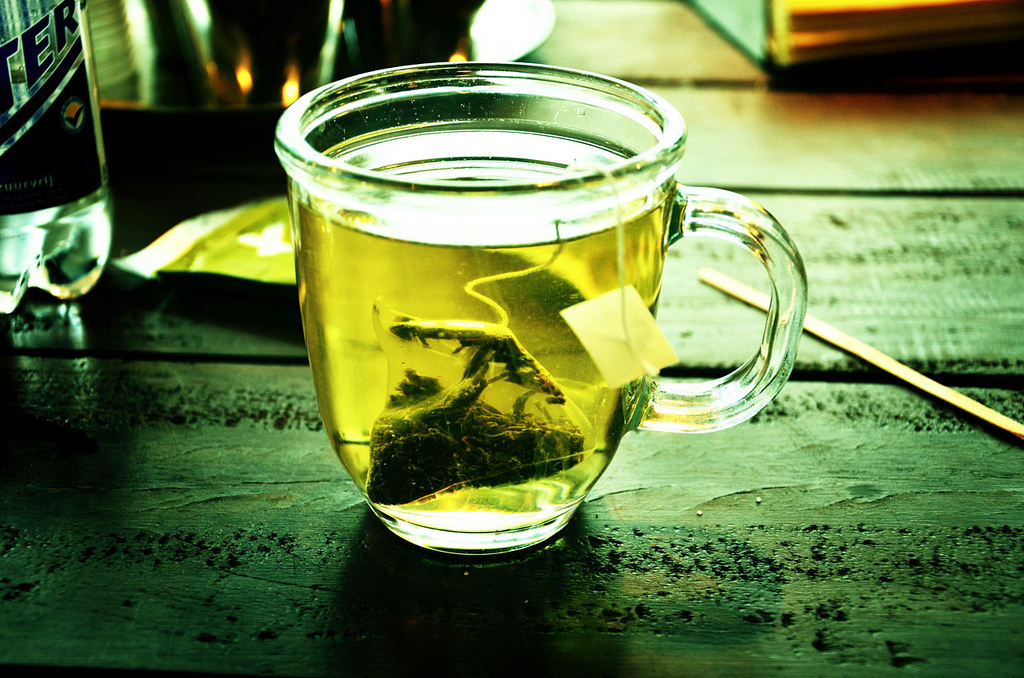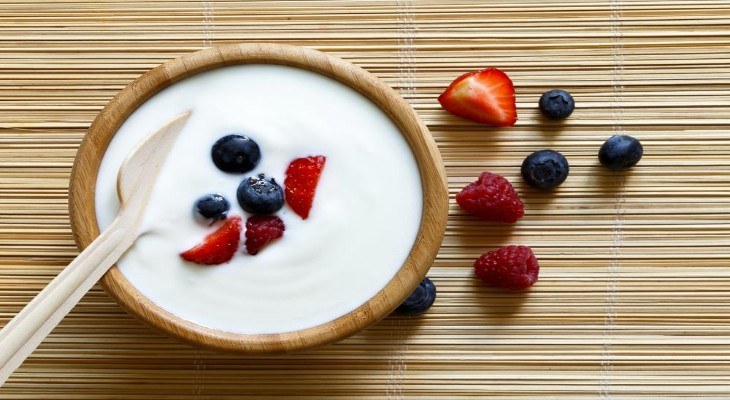There are dozens, if not hundreds, of hair growth ideas out there on the Internet. It seems like every beauty blog, drugstore, aesthetician, and yes, hair growth supplement manufacturer has their own set of ideas on how to keep your hair thick, healthy, and strong.
How can you possibly keep them all straight, and evaluate which of these tricks will work for you? The answer is with real scientific evidence, something we’re big fans of here. So, please find below your list of 10 DIY hair growth ideas for any budget. You can do all of these in the comfort of your own home, with items easily found at any grocery store.
Some of these have real science backing them, while others don’t. Your results may vary, as is true of any herbal remedy or treatment.
However, we’ve only picked treatments that have at least anecdotal evidence supporting them, and don’t have the potential to cause any harm. That means you won’t hurt yourself or your hair by experimenting, and each treatment has its own contingent of people who swear that it’s made their hair healthy, shiny, long, and beautiful.
Apple Cider Vinegar

Apple cider vinegar, affectionately known as ACV, has long been a favorite of people looking to regulate their digestive health. As it turns out, it’s great for your hair, too.
How to do it
It doesn’t take much ACV to get the hair growth benefit. Just mix 2-4 tablespoons into a 16 oz bottle. You can add a few drops of your favorite essential oil too, if you’d like it to smell nice. Shake to mix, then lean back your head and pour the mixture out over your scalp. Let sit for 1-2 minutes, then rinse thoroughly.
How it works
Apple cider vinegar is a little bit acidic, helping to gently restore the natural ph balance of your hair. It’s anti-viral and anti-bacterial as well, helping to clear up any small infections before they get started Although there are more claims about apple cider vinegar hair rinses, the science is still out on them.
What is known for sure is the sheer number of people for whom apple cider vinegar works. Give it a try, don’t use too much, and you’re likely to be pleasantly surprised.
Green Tea

That’s right, green tea, straight out of the tea bags. Choose an organic variety for the greatest effect, and to avoid any trace amounts of pesticides. Avoid flavors or blends; you want just the tea.
How to do it
Boil a single tea bag in two cups of spring or distilled water. When drinking green tea, you’ll only want to steep it for a few minutes. For your hair, though, make it very strong. Steep for about 10-15 minutes.
Once cooled, the tea should be used as a hair rinse. At the end of your hair regimen, pour the water into your hair and massage it in. Let it sit for up to five minutes, then rinse.
You can also add other hair beneficial products like aloe vera gel to the mixture, or not as you prefer.
How it works
Green tea is a natural source of many compounds already found in leading shampoos and conditioners. Caffeine helps to stimulate your hair follicles, speeding up hair growth. It’s also packed with panthenol and theanine, both of which serve to strengthen your hair.
Eggs

This one is a bit of a fad. Multiple celebrities swear on the power of raw eggs to keep their hair long, healthy, and shiny. The truth is, they do help, but only as a short-term treatment.
How to do it
Beat an egg with one tablespoon olive oil. You’ll get the best results if you remove the thin skin that separates the white from the shell. Use the mixture as a conditioner. After washing your hair, work the egg in, concentrating especially on the ends. Seal it on with a shower cap or plastic, and leave it for up to 20 minutes before rinsing it out.
How it works
Eggs are packed with proteins that act as a filler on damaged hair. The protein enters the microscopic gaps and cracks in your hair, temporarily strengthening it and improving its appearance. Over time and with repeated applications, new, undamaged hair will grow out, replacing the damaged strands.
Coffee

Brewed coffee, or even just the grounds, can have some benefits for your hair, but there are many claims that are unproven. Tread carefully with this one, as coffee can also dye your hair brown. It will also make it smell delicious, which could be good or bad depending on your perspective.
How to do it
It’s as simple as it sounds. Brew a strong pot of coffee, let it cool, and then rinse your hair with it after the shower. One beauty blogger actually rubbed her scalp with the grounds. She reported that it did help her hair look shinier, although she wasn’t enamored with the feel of it.
How it works
Here is where there are some unproven claims. Many people maintain that rinsing your hair with coffee will cause the cuticles to lay flat, improving the shine of your hair. However, as we’ve posted previously, this is largely a myth.
What is certain is that coffee is loaded with caffeine, and the benefits of caffeine as a hair growth treatment are well-known.
Note that coffee can stain or dye the hair brown. If you prefer blonde or have colored hair, be careful when using it.
Mustard Powder
The bright yellow powder, made from ground mustard seeds, is the primary ingredient in your favorite hotdog condiment. Find it in the spice aisles of most grocery stores.
How to do it
Mustard powder is best used as a hair mask. There are a great many recipes available, but one of the simplest is to mix two tablespoons of mustard powder with two tablespoons of warm water, two teaspoons of sugar, and one tablespoon of olive oil. Stir or whisk, apply to the scalp, and let it sit for one hour. Wash with shampoo after, to avoid any lingering smell or yellow coloration.
How it works
There isn’t much science to support the application of mustard to hair, but there is plenty of anecdotal evidence. As a traditional remedy, it dates back to ancient India, where it was used to speed up hair growth and reduce the appearance of grays.
Yogurt

Yogurt has long been used as a moisturizing conditioner for all kinds of hair. As always, choose organic if possible, and obviously don’t go for the flavored variety! Full-fat yogurt will yield the best results.
How to do it
The best way to use yogurt for hair growth is to mix it in a 2:1 ratio with honey, then use it as a hair mask. Combine two tablespoons yogurt with one tablespoon honey, then gently massage it into your hair. Leave it in for up to 20 minutes, then wash with shampoo.
How it works
Like eggs, yogurt is composed mostly of protein, allowing it to give your hair a temporary, but very noticeable, shine.
Yogurt is also a good source of lactic acid, which will scrub away dead skin cells from your follicles, freeing them up to grow healthy new hair at peak efficiency.
Brewer’s Yeast
Brewer’s yeast is a mainstay at natural food stores, and can be found in powder or pill form.
How to do it
This supplement doesn’t need to be applied directly to the hair. Eating it in the recommended dosage will do plenty. It has a cheesy, nutty flavor, and goes great in sauces, as a salad topping, or even on popcorn.
How it works
The health benefits of brewer’s yeast are many, and most of them directly target hair and nails. It’s a rich source of biotin, which can have a dramatic effect on hair growth and health. Brewer’s yeast is also packed with riboflavin, B vitamins, and selenium, all of which can slow or even reverse hair loss.
Potato Juice
Yes, it’s the juice of a potato. Russets are the most common choice, but any type will work.
How to do it
Wash four medium potatoes and cut them into large pieces. Place in a blender with about a half cup of water, and process until it produces a smooth pulp. Press the pulp through a cheesecloth or muslin. The clear “juice” is the part you need; the pulp may be discarded or composted.
A juicer will work just as well, if you have one available.
Massage about a half cup of potato juice into your hair, and let it sit for up to 20 minutes before rinsing.
How it works
As a vegetable, potatoes are full of vitamin B, vitamin C, iron, and niacin. All of these can help to keep hair follicles healthy.
However, the extent of potato juice’s benefits have not been rigorously studied. As with some other popular hair growth home remedies, there is a great deal of anecdotal evidence, but little to none of the clinical kind. You may see an improvement after a potato juice rinse, and it certainly won’t hurt.
Ginseng

Ginseng, also called Korean red ginseng, is easily available in most groceries and all Asian markets. It comes in pill and powder form. For creating a DIY hair growth treatment, purchase the extract.
How to do it
Ginseng may be added to any homemade shampoo or conditioner. Most DIY shampoos are composed of water, oil, and soap, with essential oils and herbs added for scent or beneficial effects. Here’s one of our favorite recipes for ginseng shampoo.
How it works
Washing or massaging the scalp with ginseng has been proven to stimulate hair growth by improving blood flow to the hair follicles. Ginseng is also a strong antioxidant, which benefits your entire body.
Note that ginseng can increase blood pressure with ingested in large amounts. If you have concerns about high blood pressure, consult a doctor before supplementing with ginseng.
Carrot

Orange carrots are a mainstay of the Western diet, and they come in a variety of other colors, as well. Choose organic if possible.
How to do it
Incorporating carrots into your meals is a great way to improve your hair health, and they can also be used to make an oil or spray. Blend or juice the carrots, or buy premade 100% pure carrot juice, and mix into your favorite shampoo, conditioner, or product.
How it works
Carrots are an excellent source of a wide spectrum of vitamins, nearly all of which benefit hair. Vitamins A, K, C, B6, B1, B3, and the list goes on. Carrots are a genuine superfood, with the added option of applying directly to the scalp.
Conclusion and an Important Note
There are plenty of other DIY hair growth ideas out there. We’ve chosen some that are the most likely to help, and that certainly won’t hurt. You may or may not see results from any of these tricks, but part of the fun is in experimenting.
If you stray from this list and explore other options, always be sure to carefully investigate the potential side effects. When in doubt, consult a doctor or medical professional.

Leave a Reply